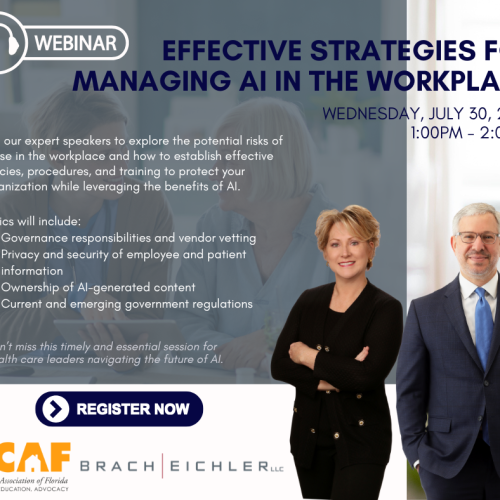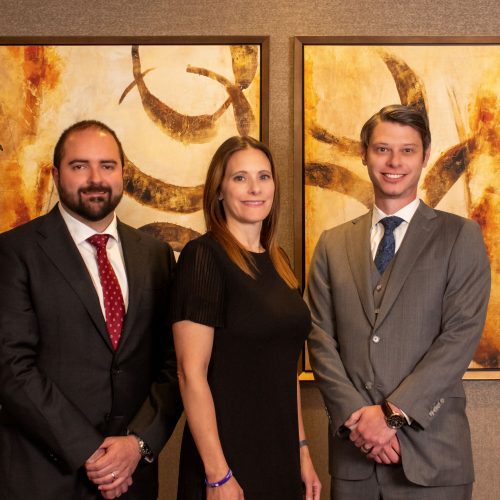Labor and Employment Alert: PPP Update: Some Light Reading Over America’s Birthday Weekend
7/2/2020
You read our June 8 blog post PPP Relief through the PPP Flexibility Act of 2020. So what has the SBA and Treasury Department done since then? A lot.
New Regulations:
Interim Final Rule on Revisions to First Interim Final Rule (originally posted 6/11/2020) – This regulation revises the First Interim Final Rule previously posted on April 2, 2020 (published on April 15, 2020) relating to:
- Loan maturity – loans made before June 5, 2020 will continue to have a two-year maturity absent agreement of the lender and borrower to extend maturity to five years; loans made on or after June 5, 2020 will have a five-year maturity.
- Deferral of loan payments – borrowers have ten months from the end of the loan forgiveness covered period to submit the forgiveness application, during which time no principal or interest payments are due. If the application is submitted during that ten-month period, the borrower will not have any payment obligations until the SBA remits the loan forgiveness amount on the loan to the lender.
- Loan forgiveness – makes the 60% minimum payroll costs for forgiveness a proportional limit on non-payroll costs, but not a threshold to reach in order to obtain forgiveness. The regulation also memorializes the new safe harbor for forgiveness where the borrower is unable to rehire previously employed individuals or similarly qualified employees.
- Borrower certification – the borrower will need to certify that that the loan proceeds will be used to retain workers and maintain payroll or make other non-payroll costs authorized by the PPP. The borrower will also certify that he understands that if the funds are used knowingly for unauthorized purposes, the Federal government may hold him liable for fraud.
- Documentation required – the borrower will need to verify the number of FTEs on payroll as well as dollar amounts of payroll costs and non-payroll costs.
Interim Final Rule on Additional Revisions to First Interim Final Rule (originally posted 6/12/2020) – This regulation revises the First Interim Final Rule previously posted on April 2, 2020 (published on April 15, 2020) relating to felony convictions of applicants or owners of the applicant for the PPP loan.
Interim Final Rule on Revisions to the Third and Sixth Interim Final Rules (originally posted 6/17/2020) – This regulation revises the Third and Sixth Interim Final Rules previously posted on April 14 and 28, 2020 (published April 20 and May 4, 2020) to conform to the Flexibility Act.
Changes to the Third Interim Final Rule:
- Payroll forgiveness amounts: for non-owner compensation, payroll costs for the 24-week period are a maximum of $46,154 per individual plus covered benefits for employees (but not owners). For owner-compensation for owners who have self-employment income and who file a Schedule C or Schedule F, forgiveness is limited to eight weeks of 2019 net profit (max of $15,385) for borrowers with an eight-week covered period, and forgiveness is limited to 2.5 months of 2019 net profit (max of $20,833) for borrowers with a 24-week covered period.
- Interest on mortgage obligations: payments on mortgages incurred before February 15, 2020, to the extent they are deductible on Form 1040 Schedule C are forgivable.
- Utility payments: payments under service agreements dated before February 15, 2020 to the extent they are deductible on Form 1040 Schedule C are forgivable.
Changes to the Sixth Interim Final Rule: changes were made to reference the new eight- week or 24- week covered period to spend the loan proceeds.
Interim Final Rule on Revisions to Loan Forgiveness and Loan Review Procedures Interim Final Rules (originally posted 6/22/2020) – This regulation revises the Loan Forgiveness and Loan Review Procedures Interim Final Rules, previously posted May 22, 2020 (published June 1, 2020).
Changes to the First Loan Forgiveness Rule:
- Changes were made to reflect the new 60% payroll costs requirement.
- Changes were made to the loan forgiveness process portion of the rule to conform to the Flexibility Act’s ten-month period to submit the forgiveness application and the lender’s 60-day period to make a forgiveness determination.
- The changes to the forgiveness application process apply only to loans not reviewed by the SBA, which will be covered by a separate rule.
- Borrowers may submit their forgiveness application any time on or before maturity of the loan, even before the end of the covered period, if the borrower has used all of the loan proceeds for which it is seeking forgiveness. If the borrower applies for forgiveness before the end of the covered period and had reduced wages/salaries in excess of 25%, the borrower must account for the excess salary reduction for the full covered period.
- Clarify that payroll costs incurred or paid during the covered period are eligible for forgiveness; and borrowers with a biweekly or more frequent payroll cycle may opt to start the covered period on the first payroll cycle in the covered period.
- The caps on loan forgiveness for owner-employees and self-employed individuals’ own payroll compensation are eight weeks of 2019 compensation (max of $15,385) or 2.5 months of 2019 compensation (max of $20,833).
- C-corporation owner-employees are capped by the amount of their 2019 employee cash compensation and employer retirement and health insurance contributions made on their behalf.
- S-corporation owner-employees are capped by the amount of their 2019 employee cash compensation and employer retirement contributions made on their behalf, but employer health insurance contributions made on their behalf cannot be separately added because those payments are already included in their employee cash compensation.
- Schedule C or F filers are capped by the amount of their owner compensation replacement, calculated based on 2019 net profit.
- General partners are capped by the amount of their 2019 net earnings from self-employment (reduced by claimed section 179 expense deduction unreimbursed partnership expenses, and depletion from oil and gas properties) multiplied by 0.9235.
- For self-employed individuals, including Schedule C or F filers and general partners, retirement and health insurance contributions are included in their net self-employment income and therefore cannot be separately added to their payroll calculation.
- Non-payroll costs paid or incurred during the covered period are forgivable subject to the 40% cap.
- Reductions to loan forgiveness amount:
- Borrowers have until December 31, 2020 to cure any reduction in FTEs or in salary/wages.
- There are now exemptions to loan forgiveness reduction based upon employee availability and business activity.
- There are now exemptions to loan forgiveness direction where employers have offered to restore employee hours at the same salary and wages even where the employee has not accepted.
- The revised regulation provides guidance on how the statutory forgiveness formula works.
- The revised regulation provides that the Flexibility Act’s exemption relating to employees who refuse to be rehired supersedes and replaces the First Loan Forgiveness Rule’s de minimis exemption relating to reductions in FTE employees; but the revised regulation keeps in place the First Loan Forgiveness Rule’s de minimis exemption relating to reduction of employee hours where the employee declines the restoration of hours offer.
Changes to the First Loan Review Rule: the revised regulation updates the lender review process to comply with the Flexibility Act.
Interim Final Rule on Additional Eligibility Revisions to First Interim Final Rule (6/24/2020) – This regulation revises the previous interim rule relating to eligibility requirements related to felony convictions of applicants or owners of the applicant for the PPP loan.
Interim Final Rule on Certain Eligible Payroll Costs (6/25/2020) – This regulation provides additional guidance on eligible payroll costs for fishing boat owners.
Updated FAQs (6/25/2020) – Added FAQ 49 that confirmed that loans issued on or after June 5, 2020 shall have a maturity date of five years. All loans issued prior to June 5 shall continue to have a two-year maturity absent mutual agreement by borrower and lender to extend the maturity to five years.
Revised Borrower Application Form (updated 6/24/2020)
Revised How to Calculate Loan Amounts (updated 6/26/2020)
Updated Loan Application Forgiveness Application and Instructions (updated 6/16/2020)
EZ Forgiveness Application Form (June 2020)
As always, we are here for you. If you have any questions about this alert or if we can assist in any other way, please reach out.
Anthony Rainone, Member, Labor and Employment Practice, at arainone@bracheichler.com or 973-364-8372
Matthew Collins, Member and Chair, Labor and Employment Practice, at mcollins@bracheichler.com or 973-403-3151












